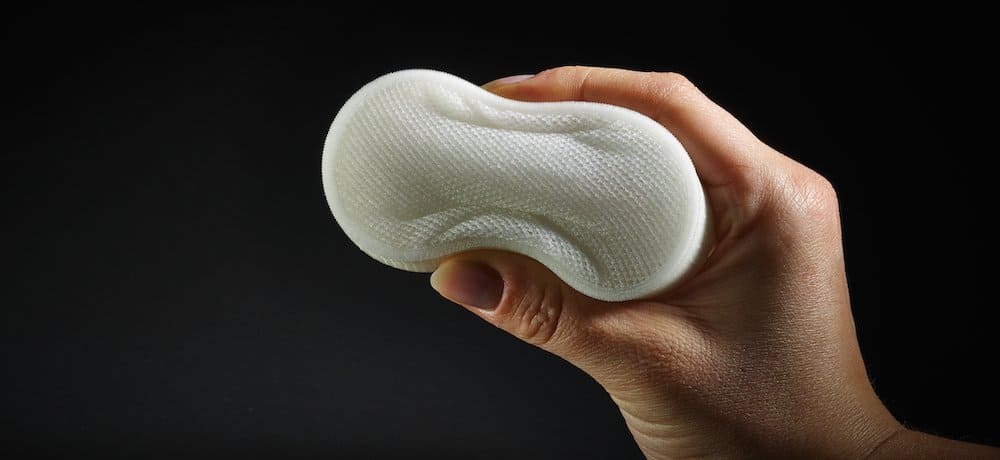Lukas Pawelczyk, head of freeformer sales, Arburg explains how the APF process with the freeformer is particularly suitable for AM in medical technology.
The medical plastics market was one of the first to make extensive use of additive manufacturing (AM) technology, creating complex and often custom-designed components and devices in relatively small numbers. This trend has accelerated as the imagination of medical designers and new 3D printing equipment have made the previously impossible possible. Now, a different type of system is extending those boundaries even further by allowing the use of the same plastic granules used in injection moulding, including biocompatible, resorbable, sterilisable, and FDA-approved original materials.
Developed and built by Arburg, the German manufacturer of precision injection-moulding machines, the freeformer machine, with its Arburg Plastics Freeforming (APF) process, facilitates sophisticated medical applications that cannot be achieved with any other process.
‘Open system’ is the key
Similar to injection moulding, the freeformer operates by melting conventional plastic granules via a heated plasticising cylinder. A high-frequency pulsing rigid nozzle then discharges tiny droplets of the liquid plastic melt. The part carrier, which can be moved along three axes, enables each individual droplet to be set down precisely. The applied droplet bonds with the existing surrounding material so that, layer-by-layer, three-dimensional components with a high mechanical strength are produced.
Part production starts from 3D CAD data in basic stereolithography STL format. Unlike conventional filament-fed AM systems, freeformers work using a wide variety of qualified standard plastics granulates. In addition, users can process their own custom-compounded materials with this ‘open system’ and optimise the droplet size and process themselves. Alternatively, they can access Arburg’s material database and select certified plastic granules, such as ABS (acrylonitrile butadiene styrene), amorphous PA (polyamide) and PC (polycarbonate), elastomeric TPU (thermoplastic polyurethane) and semi-crystalline PP (polypropylene), PLLA (poly-L-lactic acid) and other special and certified original materials including biocompatible, absorbable, sterilisable, and FDA-approved original materials.
Resorbable implants
An outstanding example of the use of the APF process in medical technology is the processing of Resomer LR 706 (composite of poly L-lactide-co-D,L-lactide and ß-TCP) from Evonik to create implant plates that are inserted directly into the body in the case of bone fractures. The polymer composite, which is modelled on human bone, contains 30% ceramic additives, known as ß-TCP. This makes the component stronger and releases calcium to promote bone regeneration. After a given time, the implant dissolves completely.
Resorbable cranial bones, cheekbones, and finger bones have also been made from medical PLLA (Purasorb PL18, Resomer LR 708). In addition, the plastic granules can be loaded with anti-inflammatory agents, for example, to minimise rejection.
Permanent implants are also being produced using the APF process. For instance, spinal implants have been made using Bionate thermoplastic PCU (polycarbonate polyurethane), and a multimaterial meniscus (using different types of polyurethane) were developed within a few days eliminating the time-consuming (and more complicated) development of an overmoulded part produced by conventional overmoulding.
Medical aids
The APF process is also used for medical devices and aids. The freeformer processes medically approved SEBS (styrene-ethylene/butylene-styrene) (Cawiton PR13576) with a hardness of 28 Shore A, for instance. This very soft material is dense and tear-resistant and is suitable for producing items such as functional bellows. Another typical example is sawing templates made from PA, which are used as customised surgical aids. Flexible and electrically conductive strain gauges are one example of future developments. These consist of soft TPU material (Desmopan) with carbon components and an inserted LED. The two-component functional part produced with the freeformer is both flexible and electrically conductive. Depending on the strain and thus the electrical resistance, the LED lights up with different brightness. Strain gauges of this kind could be used in physiotherapy, emitting an acoustic signal as soon as an injured arm or operated knee is overstretched or understretched.
Filling level can be selectively changed
To date, the freeformer is the only AM system that can process the FDA-approved TPE Medalist MD 12130H (hardness 32 Shore A) and, without changing processing parameters, adjust the filling level of the part — how close together the droplets are — to fine-tune mechanical properties and achieve different hardnesses. For example, at a fill level 100% (that is, drops as dense as possible), maximum mechanical strength and stiffness is achieved. At a fill level of 20%, for example, there is a greater distance between the drops and the part is more flexible. It is even possible to create different material densities in different parts of the same a component.
A current research project at the University of Belfast, Ireland, is looking at how vaginally inserted rings loaded with active ingredients can protect women from HIV infection. Using medical-grade TPU, rings with different filling levels (100, 50 and 10%) were investigated. The lower the filling level, the more porous the TPU ring and the greater the active ingredient release. Result of the study: at a filling level of 50%, about 60 of a total of 111 mg of active ingredient are released over a period of 30 days. This compares with only five out of a total of 190 mg for an injection-moulded ring. In addition, the APF process is also gentler than injection moulding, so there is less temperature degradation, less stress and the active ingredient remains more stable.
Freeformers are suitable for cleanrooms
With just a few minor modifications, all freeformers are suitable for use in cleanrooms. They operate with low emissions, are virtually dust-free, and their build chamber is generally made from stainless steel. An optional robotic interface allows the AM to be automated and the freeformer to be integrated into IT-networked production lines. Process quality can be reliably documented and the components individually traced if required.
Conclusion
The APF process with the freeformer is particularly suitable for AM in medical technology. Geometric freedom combined with material freedom opens up completely new plastic applications, including for use within the human body.


